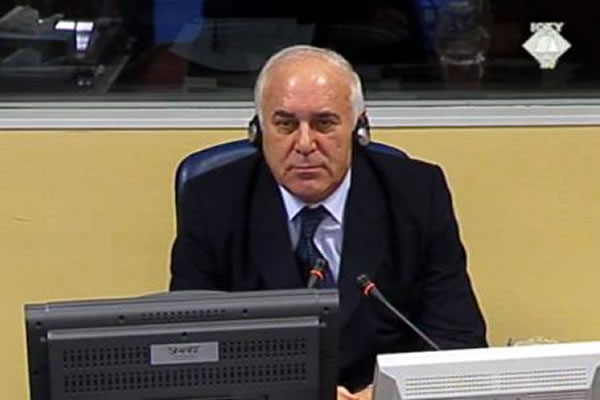Home
PATTERN OF ‘HAVOC’ IN CROATIAN VILLAGES
Former member of the Crisis Staff in Lovas Adam Rendulic described at Goran Hadzic’s trial the pattern of the attacks on the Croatian villages of Sotin, Lovas, Tovarnik, Bapska and Ilok by the Serb forces. After mortar fire, the villagers were given an ultimatum to surrender the weapons, the witness recounted. Regardless of the outcome, there would be an attack which ended with the paramilitaries entering the village
 Adam Rendulic, witness at the Goran Hadzic trial
Adam Rendulic, witness at the Goran Hadzic trial Prosecution witness Adam Rendulic described at Goran Hadzic’s trial the pattern of the attacks on the Croatian villages of Sotin, Lovas, Tovarnik, Bapska and Ilok in Eastern Slavonia by the Serb forces. The scenario was always the same, the witness said, claiming the intent was to ‘put pressure’ on the villagers, to cause panic and fear with the artillery attacks, to ‘allow the paramilitary units to enter’ the villages to ‘wreak havoc, abuse people, torch houses and kill’. All this was done to force Croats to leave the area.
The pattern was described in a confidential document shown by the prosecution. The document states that the JNA first created ‘tensions, confusion and fear by opening mortar fire’. The JNA would then ‘issue an ultimatum to the villagers to gather arms’. Regardless of the outcome of the ultimatum, the JNA would then launch an attack which would end with ‘Chetniks entering the village’.
In August 1991, Rendulic negotiated with the reservists from the JNA Novi Sad Corps the deblocking of the road between Tovarnik and Lovas. At the time, Rendulic was the director of the agricultural cooperative in Lovas. He was involved in the negotiations as a member of the local crisis staff. He had joined that body because he felt that he could ‘contribute to the effort to defuse the situation and maintain good relations between Serbs and Croats’.
In the new round of talks with the JNA in Sid on 27 September 1991, the representatives of the crisis staff were confronted with an ultimatum: they were told to surrender weapons or ‘Lovas will be razed to the ground’. Although the villagers managed to gather some weapons, Lovas was attacked on 1 October 1991. Full-on ‘aggression’ followed on 10 October 1991, the witness said. The attack was supported by tank and mortar fire on the Croat part of the village. Many houses were burned down. After the arrival of the paramilitaries headed by Ljubomir Devetak, the witness fled from the basement where he was hiding to Ilok. The next day, Rendulic again met with JNA representatives in Sid because the president of the Ilok Crisis Staff invited him to describe what had happened in Lovas.
As the witness said, at the meeting the people from Ilok were given an ultimatum: to surrender their weapons or else Ilok would be ‘demolished’. On 13 October 1991, the residents voted in a referendum and most of them decided to keep the arms and move out of Ilok. Most of the people left Ilok on 17 October 1991 and the JNA allowed them to take only basic possessions.
The prosecutor showed the witness the recording of Goran Hadzic’s statement, in which Hadzic says, ‘the clean-up of Ustasha villages is progressing slowly…some villages are surrendering and the culprits will face justice’. Commenting on the statement, the witness said ‘there were no [Croat] forces’. That was a ‘total farce with claims that the villages were controlled by the Ustashas’ used as a pretext for the attacks and the removal of the Croat population.
Tomorrow, Rendulic will be cross-examined by Hadzic’s defense counsel.
